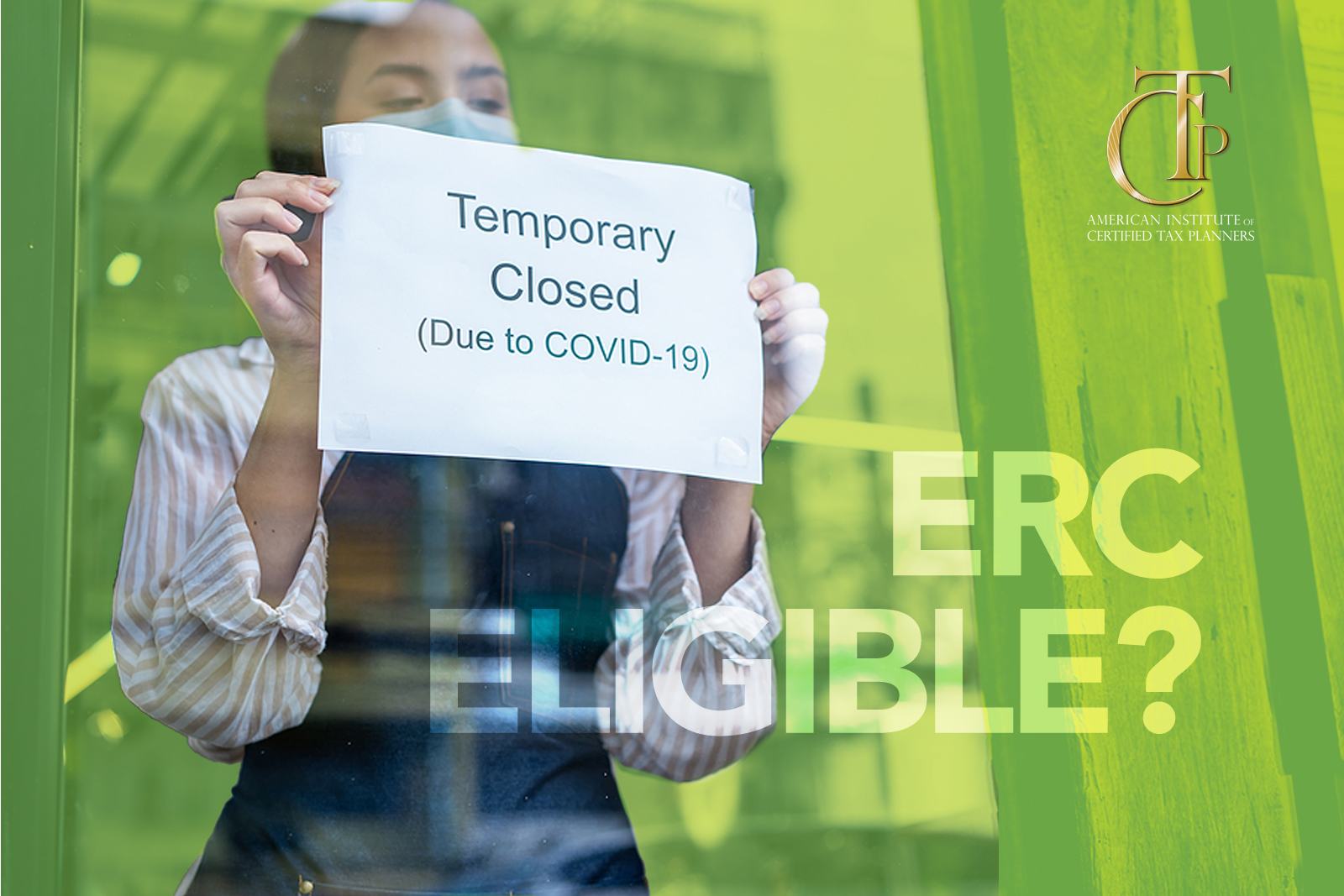“Get $26,000 per employee through the Employee Retention Credit!” Messages like this have been popping up across social media, radio ads, and even roadside billboards. Swarms of “ERC mills” have been making grand promises to taxpayers—but they provide very few details on how to ensure you actually qualify for this lucrative tax credit.
Before you buy into the pitches made by ERC promoters, make sure you have a basic understanding of how the Employee Retention Credit works. Small business owners in particular will benefit from working with an actual Certified Tax Planner to get custom-tailored advice on whether they qualify for this credit and how much they are eligible to claim.
So what do employers need to know about this tax credit? Read on for an overview of who counts as an eligible employer.
ERC Basics
First, we need to understand how the Employee Retention Credit works. This credit was introduced toward the beginning of the COVID-19 pandemic in 2020 in response to the massive number of workers who could not work due to government shutdowns and related reasons.
The ERC is a fully refundable tax credit, which means that if the amount you qualify for exceeds your tax liability, you will receive the difference in your tax refund. The exact amount you can receive depends on the year you are claiming the credit.
For 2020, eligible employers can claim 50% of qualified wages. Remember that the ERC is designed to help cover the cost of wages paid to employees who could not work, so wages must fall under that category to qualify. These wages are also limited to $10,000 per employee for 2020.
For 2021, eligible employers can claim up to 70%, and wages are limited to $10,000 per employee per calendar quarter.
Which Organizations Are Eligible?
Trades and Businesses. When it comes to the ERC, only trades and business can be eligible employers. The IRS has a set of “hobby loss rules” that determine if an activity is truly a business intended to make a profit or simply a hobby—which means you would not be allowed to deduct any expenses or claim any losses related to that activity on your tax return.
Tax-Exempt Organizations. What if your organization is tax-exempt? Normally, our instinct would be to say that of course a tax-exempt organization would not be eligible for a tax credit. However, the ERC is a credit against payroll taxes, and tax exempt organizations still pay payroll taxes. At some of these organizations, employees continued to receive their full salary while operations were shut down due to government orders concerning COVID-19 safety. So these organizations could receive up to $26,000 per employee in refunds.
Note that government employers are not eligible, but in 2021, certain colleges and universities may be eligible if their primary purpose is medical or hospital care. This applies to organizations in any U.S. territories, including places like Guam and Puerto Rico.
Self-Employed Taxpayers. Self-employed individuals can be eligible employers but not on their own earnings. So unless the company has other employees, you will not have any qualified wages to draw from.
Small and Large Employers. Technically, any size employer can qualify for the credit, but the rules differ depending on whether your organization is considered a small or a large employer. The definition for a large employer used to be 500 or more employees, but in 2021, the number dropped to 100 or more employees. So keep in mind that the definition of a “small employer” is dramatically different for tax year 2020 than it is for 2021.
Small employers receive certain benefits. If they have qualified wages from continuing to pay employees who were not working, those businesses can actually claim all employee wages. So a small employer’s full payroll can count toward their possible credit. Larger employers can only count qualified wages—the amount paid to employees who could not work due to the COVID-19 crisis.
The Employer Aggregation Rule
Another factor to consider is if an employer has multiple locations—that is, multiple businesses with common ownership. Affiliated service group rules already exist that will instruct you on whether to treat these businesses as a single employer. These rules could determine if you are considered a small employer or a large employer. Potentially, one of your businesses may be an eligible employer while the others are not. Fortunately, one qualifying business can qualify the whole group.
Let’s take an example: say you started a second branch of your business and that business is an eligible employer. Let’s also say that this branch has qualified wages for the third and fourth quarters of 2021. By aggregating your businesses together, your first business now becomes an eligible employer and may have qualifying wages for 2021 as well.
Summary
With all the hype around the Employee Retention Credit, business owners run the risk of either:
- jumping too quickly at false promises and spending money unnecessarily to secure a credit they are not eligible for… OR
- tuning out all the noise and missing out on potential savings.
By familiarizing yourself with ERC basics, you can more reliably determine if this tax credit could be available to your business. For assistance navigating the requirements around the ERC and other business tax credits, start a conversation with a Certified Tax Planner today.





